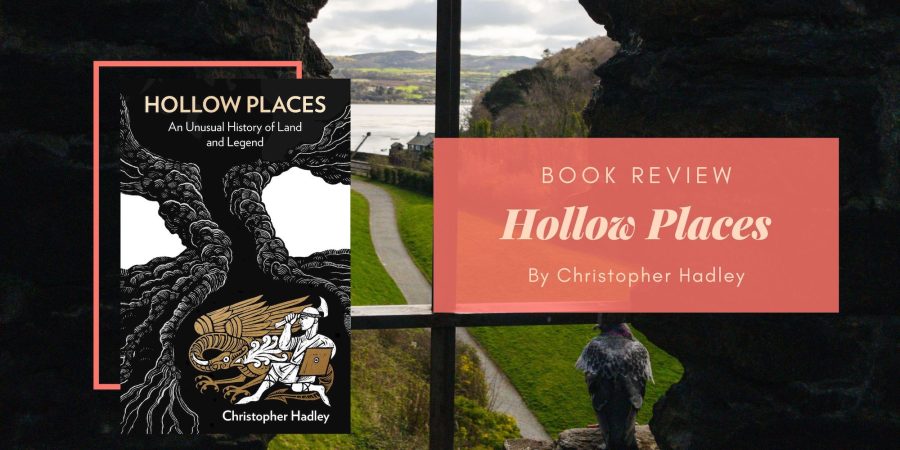A long time ago, when dragons still roamed the earth, there was a local lord of the manor named Piers Shonks. One day, he returned home from a holiday to discover a dragon was terrorising his village and desiring the peace of his village, he made battle with the dragon and finally defeated it. The story is true, because in the village of Brent Pelham, you can see his tomb in the Church.
That, at least, is the shortened version of the legend of Piers Shonks (who even has his own Wikipedia page). But did Piers Shonks really exist? If we assume this is a legend, because ‘dragons have never existed’, then did his tomb come to be?
In Hollow Places, Christopher Hadley tries to pick apart and trace the history of the legend without spoiling the magic of it. He looks at the stone tomb, digs through tons of old records, and tells us a lot about the local folklore along the way.
Since this is partly a detective story, I won’t give the ending away. But I can say that I learnt quite a bit about the history of Piers Shonks along the way. While the book is fairly long and winding, since Hadley likes to give us the context of the various things he is searching and since there is at least 800 years of history here, there is a lot of context to be given.
Since Piers Shonks is a local legend, Hadley also gives us a lot of information about how folklorists have treated this tale, and also about folklore in general. Some notes I took:
- “Folk legends, with their origins buried deep in the past, owe much to unseen forces; they are crafted gradually like limestone pillars on the seashore, eroded imperceptibly to their present shape by sea and wind and rain” – what a descriptive quote of how folk legends change over time!
- Folk legends differ from folk tales in that folk tales were never believed and only told for entertainment, whereas there is a “proof” in the real world and the story as to the truth of a legend
- Yews are seen as sacred and “[a] single yew outside a churchyard is a great rarity – with or without a dragon’s lair.”
- “how many folk beliefs came about because the symbols and rites of the old religion were forgotten (and there were no more monks to make sense of them)?”
- “There are often three stages in the life cycle of a folk legend: a mysterious object, the story that explains the mysterious object, and finally those who come along and try to explain the story.”
- “Grouping tales by motif can homogenise them and leads the taxonomisers to assume things about one legend because it has been classified with another, however superficial or recently appended, that similarity might be when we dig deeper.”
- “Searching for a kernal of truth by trying to remove the legendary elements misses something, it gets rid of the best bits. The legend holds the deeper truths, about our hopes and fears, about how our imaginations work, what we value, and the effect.”
The only “downside” to the book is that because it can become beautifully lyrical, and because it’s the history of one specific legend, it’s quite easy to lose your way while reading it. While the thread of “Who is Piers Shonks” ties the book together, I did occasionally pause to wonder why Hadley was exploring a certain rabbit hole, or to take time and figure out where we are on the journey to solving the mystery of Piers Shonks (if it can be solved). In other words, it could get confusing, especially given the amount of information in this book.
Overall, though, I really enjoyed this book! I went in knowing nothing about the legend of Piers Shonks but I learnt so much about the area, its history, and how legends can evolve over time.

This sounds interesting with legends and folklores and history related to it.
It’s very interesting, I highly recommend it!
The point about folk tales/legends coming about because of loss of older religions is so interesting and something I think most likely happened a lot. Especially here in the UK
Yup, this book is very UK specific but I think it’s a great case study of how folklore evolves with the changing environment
Very interesting. It’s the first I’ve heard of Piers Shonks.
Same here! But it’s fascinating once you dive into it!
[…] Hollow Places by Christopher Hadley – this is a book that investigates the folktale of Piers Shonks, who allegedly defeated a dragon. While not about dragons, it is a great book that goes deep into one particular folk tale and how it evolved. (My review) […]